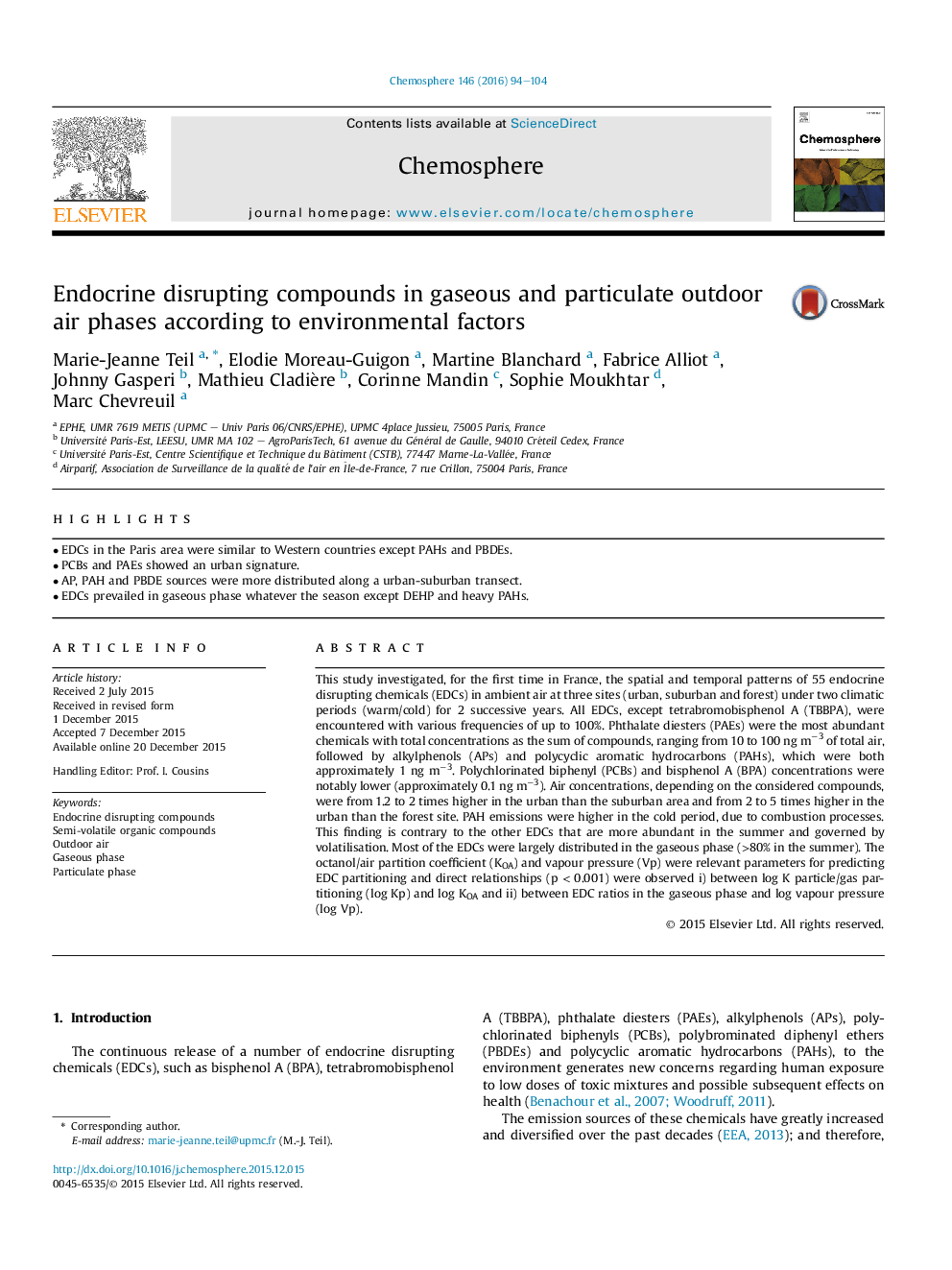| Article ID | Journal | Published Year | Pages | File Type |
|---|---|---|---|---|
| 4407931 | Chemosphere | 2016 | 11 Pages |
•EDCs in the Paris area were similar to Western countries except PAHs and PBDEs.•PCBs and PAEs showed an urban signature.•AP, PAH and PBDE sources were more distributed along a urban-suburban transect.•EDCs prevailed in gaseous phase whatever the season except DEHP and heavy PAHs.
This study investigated, for the first time in France, the spatial and temporal patterns of 55 endocrine disrupting chemicals (EDCs) in ambient air at three sites (urban, suburban and forest) under two climatic periods (warm/cold) for 2 successive years. All EDCs, except tetrabromobisphenol A (TBBPA), were encountered with various frequencies of up to 100%. Phthalate diesters (PAEs) were the most abundant chemicals with total concentrations as the sum of compounds, ranging from 10 to 100 ng m−3 of total air, followed by alkylphenols (APs) and polycyclic aromatic hydrocarbons (PAHs), which were both approximately 1 ng m−3. Polychlorinated biphenyl (PCBs) and bisphenol A (BPA) concentrations were notably lower (approximately 0.1 ng m−3). Air concentrations, depending on the considered compounds, were from 1.2 to 2 times higher in the urban than the suburban area and from 2 to 5 times higher in the urban than the forest site. PAH emissions were higher in the cold period, due to combustion processes. This finding is contrary to the other EDCs that are more abundant in the summer and governed by volatilisation. Most of the EDCs were largely distributed in the gaseous phase (>80% in the summer). The octanol/air partition coefficient (KOA) and vapour pressure (Vp) were relevant parameters for predicting EDC partitioning and direct relationships (p < 0.001) were observed i) between log K particle/gas partitioning (log Kp) and log KOA and ii) between EDC ratios in the gaseous phase and log vapour pressure (log Vp).
